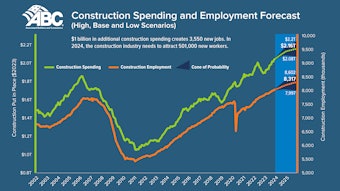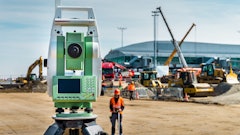
As a document controller, it’s your job to help colleagues and contractors collaborate. Everybody needs access to the latest project information. And this is much easier to achieve using software rather than spreadsheets and emails. But with so many options, how do you find the best construction software for document control?
Here are five key features to look out for when you’re shortlisting solutions:
1. A Single Source of Truth
Let’s start with the obvious: a document controller’s primary job is to manage information. But keeping pace with construction and fit-out programs isn’t easy. A vast amount of data is generated daily, so team members can quickly end up with old information. What’s worse, they don’t even all have the same old information – each person on the project may have a different version, which creates a veritable “Tower of Babel” where everyone is speaking a different language.
The easiest way to achieve a single source of truth is through collaboration software. When choosing a solution, consider the document types that your chosen software can manage. For example, can it integrate CAD files? Ideally, you want a collaboration tool that manages every file type in one place. Otherwise, your team must still monitor spreadsheets and emails alongside construction software – the very things you were trying to eliminate.
Examining how your chosen software grants access to the latest files is a worthwhile endeavor. For instance, some solutions still require you to send bulky email attachments, which isn’t ideal. Look for solutions that allow team members to download the files they need directly from the software.
2. A Configurable, Standardized Approach
Establishing a single source of truth puts your project team on the same page. However, document controllers still need to ensure that everyone uses the same approach to meet company and industry standards.
Collaboration software can run a reliable data thread through your project; whenever someone edits or updates a document, it’s available to the whole team. It also makes project information more transparent, so you can check that everyone is working in a compliant and consistent manner.
With suitable software in place for managing project information, you’ll be able to:
· Track document versions and histories
· Set permissions as to who can access which documents and editing features
· Create a digital audit train
· Meet the latest information security standards such as ISO27001
· Integrate other relevant data via APIs
It’s also worth determining whether your shortlisted software vendors provide wraparound training and support services. Good customer support will help your team quickly get up to speed with your new solution. It will also give you an idea of what to expect from their customer support in the future.
3. A Specs and Standards Database
Many document controllers need help in providing detailed information without drowning people in data. Choose information management software with built-in specs and a standards database to simplify this process.
By digitally managing your specs and standards data, you can ensure information is easily accessible by project teams. It’s particularly useful if you’re working on multiple projects that must be consistently executed – like retail fit-outs, for example.
4. 3D Model Viewer
Even if you’re doing a great job at controlling documentation, there’s no guarantee the data you share will be executed or acted on correctly. Sometimes instructions get misinterpreted, even when teams are given accurate information.
We’ve already discussed the value of establishing a single source of truth to standardize working processes. Another way to improve collaboration is by visualizing project information. Choosing collaboration software with a 3D model viewer will enable you to turn data into digestible imagery. Look for a browser-based solution which does not require plug-ins or additional software.
It’s important to remember that these viewers aren’t a standard feature on all information management systems, so be sure to ask about this specifically.
5. Projects and Properties Management
We’ve already discussed the challenges of executing consistent fit-out projects. But what happens if you’re managing multiple construction projects that must conform to the same standard?
Your choice of software can hugely impact consistency, as some solutions allow you to link developments as part of a more extensive program. Collaborative tools can also help you control building lifecycle development and improve speed, accuracy, and delivery quality.
In Summary…
Digital document control is a key component of successful project delivery. But as the points we’ve shared confirm, not all document control software is created equal meaning they don’t provide equal levels of performance.
With proper knowledge and understanding, you can choose an information management system that makes your job so much easier. More importantly, it should help your teams achieve consistent, timely results – and do it all within budget. And, today, some of the modern systems are cloud-based, giving construction and fit-out teams access to accurate information for a single version of the truth across every project.
Keep in mind: These five parameters do not represent all of the criteria you should research when considering a collaboration software platform for their business. But they are, to us and many other industry professionals, the most important.

























